Get ‘on track’ to discover Vietnam’s rich history and inspiring landscapes aboard its iconic railways. From Hanoi’s colonial charm to HCMC’s bustling streets, this train journey through verdant fields and coastal vistas offers a unique perspective of the country.
The railway between Hanoi in the north and Ho Chi Minh City (HCMC, and often referred to as Saigon) in the south of Vietnam covers a distance of 1,726 km. It was completed in 1936 by the French colonialists, and the trains that operated the 60-hour journey were known as the Transindochinoise. The country’s north and south were politically divided during the Vietnam War, and the line was ravaged by floods, bombing, and sabotage.
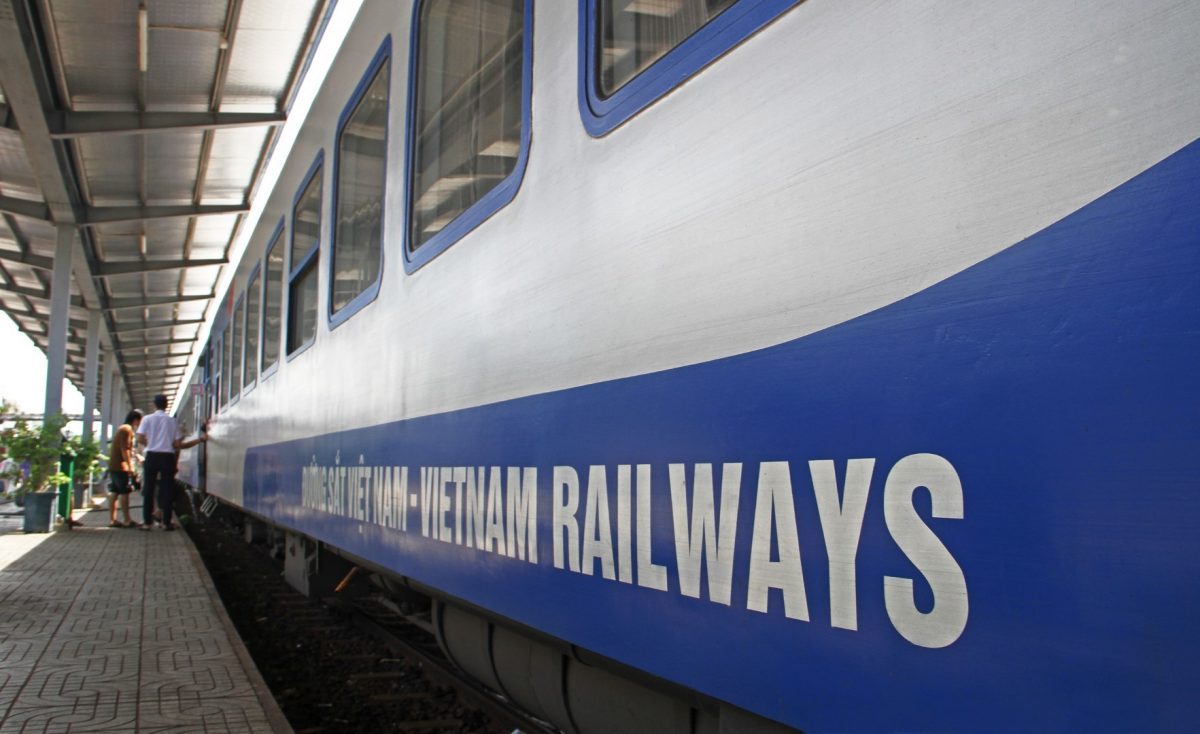
After the war, the line’s restoration was a priority, with 200 bridges, 500 culverts, 20 tunnels, and 150 stations needing repair. When the first train arrived in Hanoi in 1977, it was welcomed by thousands of flag-waving Vietnamese.
Train journeys commence in both Hanoi and HCMC, with Vietnam very much a tale of two cities. HCMC is Vietnam’s economic powerhouse, having developed more rapidly than the capital Hanoi.
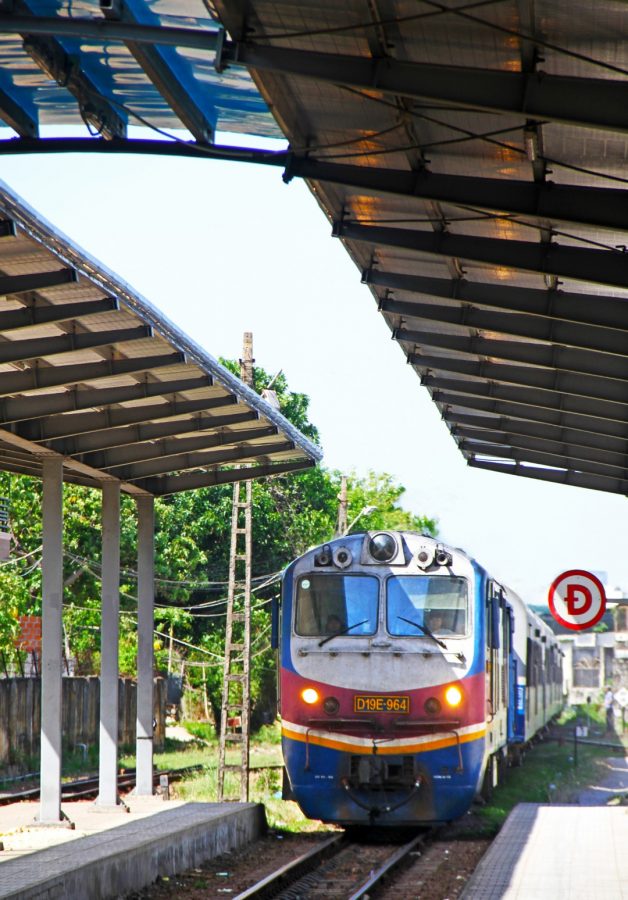
Trains operated by Vietnam Railways, and colloquially known as the Reunification Express, take 33 hours to complete their journey. At an average speed of 52 kph, the reference to ‘express’ is misleading. Train aficionados won’t complain though, as they revel in the journey. The name was given to the train in 1976 at the cessation of the war, but these days there’s no one train referred to as the Reunification Express. They’re now SE1, SE3, SE5, and SE7 for the southbound trains, while the northward ones are SE2, SE4, SE6, and SE 8.
This wasn’t my first time on the train, and I was eager to revisit the journey along coastal parts, traversing verdant fields, scenic beaches fronting the South China Sea (known here as the East Sea), and vibrant cities. Only one night was spent in a sleeper (Hanoi to Danang), as I travelled for two weeks using the train to visit Hanoi, Danang, Hoi An, Quy Nhon, Nha Trang, Mui Ne, and HCMC (Saigon).
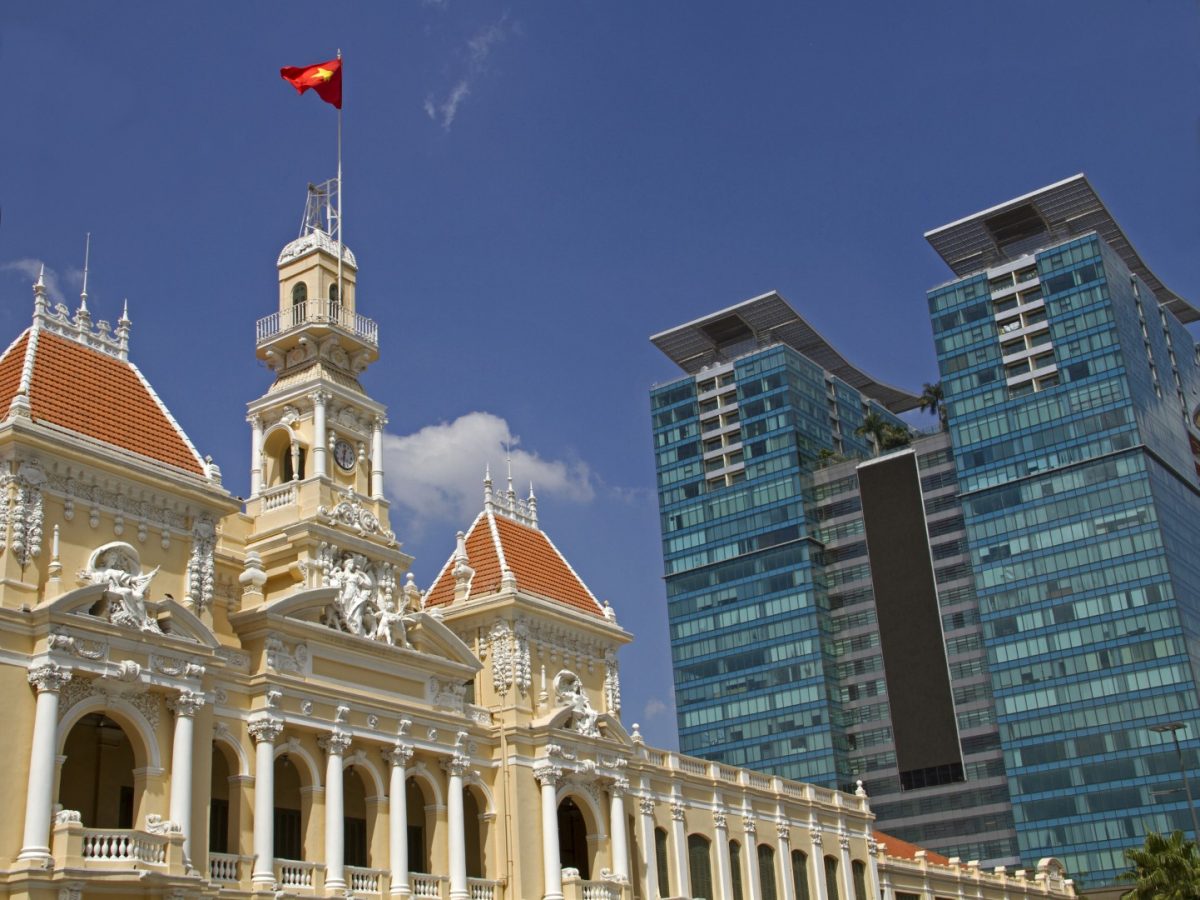
HANOI TO HUÉ
The main destinations from north to south are Hanoi, Dong Ha (for the demilitarised zone, or DMZ), Hué, Lang Co, Danang (for Hoi An), Nhon Binh (for Quy Nhon), Nha Trang, Binh Thuan (for Phan Thiet and Mui Ne), and HCMC. However, there are other stops to enable sightseeing along the way.
Hanoi’s wide boulevards and colonial buildings, especially around Hoan Kiem Lake, are places to explore, relax over coffee, and join the locals having fun in pedestrian-only sections, closed off to weekend traffic. Seeking colonial-styled indulgence, I stayed at the Sofitel Legend Metropole Hanoi and enjoyed the gastronomic Sunday brunch and a dégustation French dinner in Le Beaulieu.
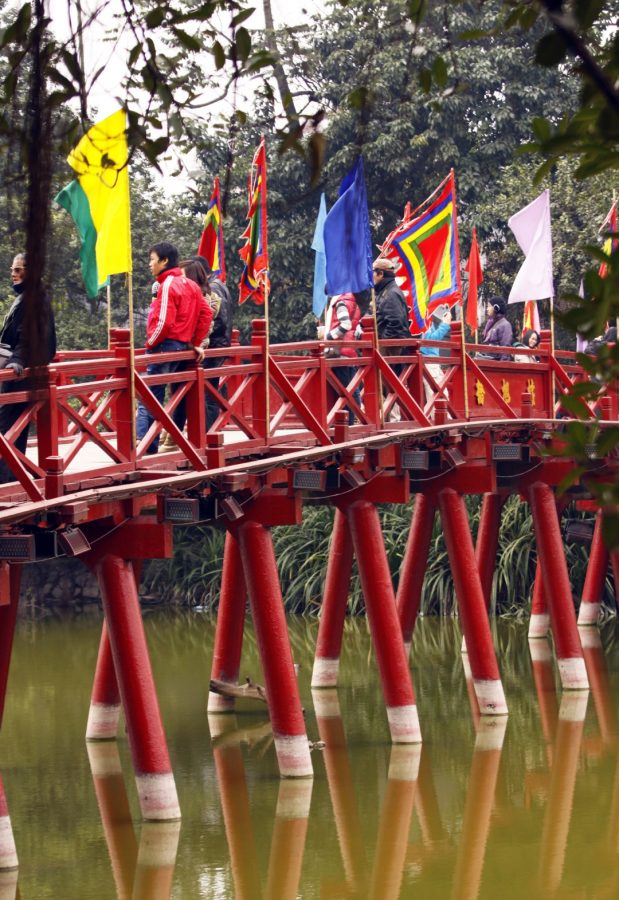
From Hanoi, express trains also stop at Thanh Hoa, Vinh, and Dong Hoi before pulling into Dong Ha. Train SE5 departed right on time. I bungled my online booking and ended up in second class with a sleeping compartment containing six bunks (first class has four bunks). Feeling like a backpacker again, I resigned myself to a less-than-comfortable evening, but a small plastic stool saved the day as I positioned myself along the corridor to admire the countryside.
After the Metropole’s luxury, my rail bed was admittedly a shock to the system. During the night, we passed through Dong Ha, and, at dawn, pulled into Hué. Having explored both before, I was a man on a mission with Danang firmly in my sights. However, I can recommend the other two destinations: Dong Ha to visit sites along the DMZ, and sections of the Ho Chi Minh Trail, and Hué for its heritage buildings in the Forbidden Purple City.
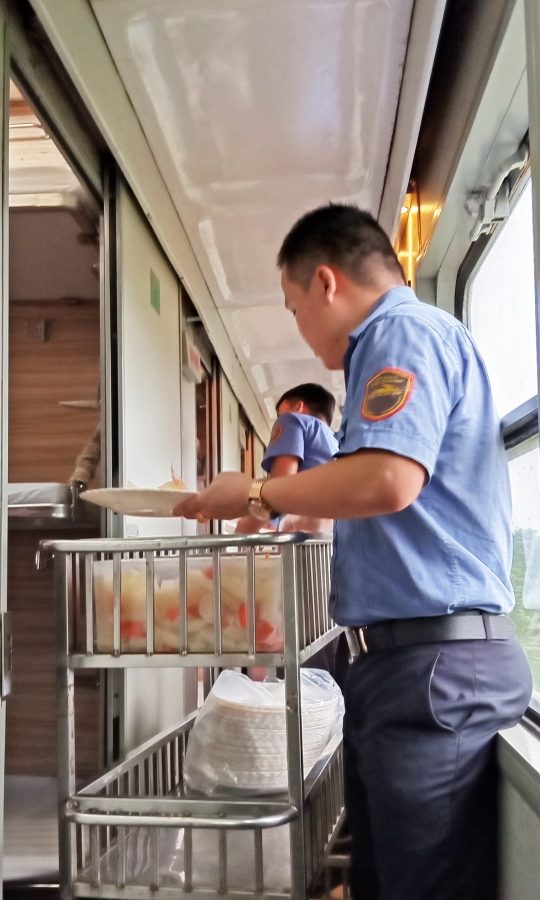
OVER THE PASS TO DANANG
The journey southward from Hué hugs the picturesque coastline around Lang Co and then skirts the Hai Van Pass. The sunrise view was spectacular, and travelling during daylight hours is recommended (the sunrises before 6am in Vietnam). The Revolution Express, a steam train, is set to start operating between Danang and Hué in a few months. Retaining the charm of Vietnam’s 1960s steam locomotives, the train promises a unique experience through Central Vietnam.
My train arrived in Danang at 8.30 am, and I was greeted by staff from the Anantara Hoi An Resort, who drove me to the resort, 30 minutes away. The ancient port of Hoi An attracted Japanese, Portuguese, Dutch, Arab, Chinese, and French merchants, and is now a UNESCO site. Its terraced shops line narrow streets given over to non-motorised traffic. The Anantara is a delightful riverside property with a resort ambiance within its urban surrounds.
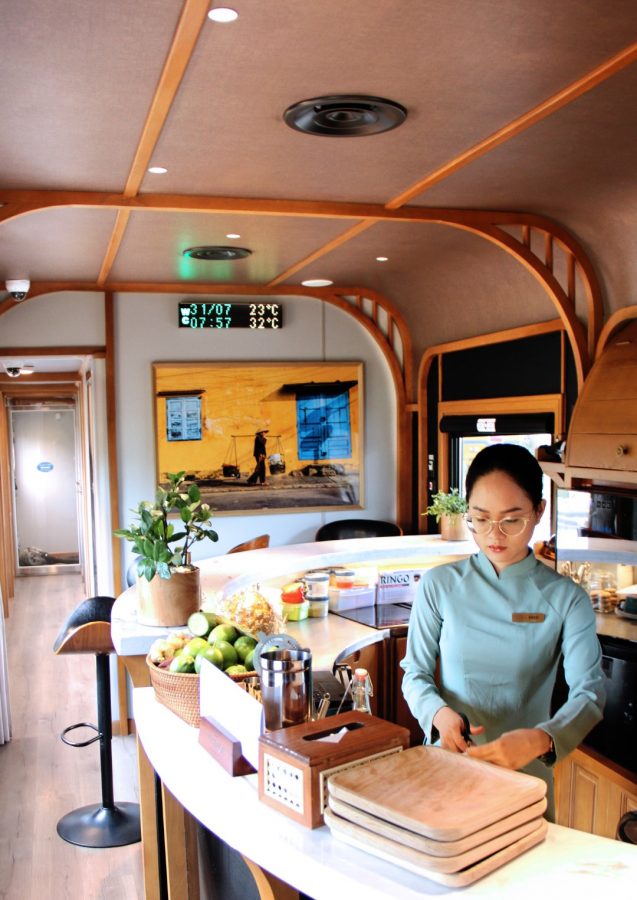
DANANG TO DIEU TRI
My reason for staying at the Anantara property was because they operate a luxurious rail carriage. The Vietage Anantara Luxury Rail Carriages are attached to the rear of the train that departs Danang Station at 8.15am.
There are two carriages, but only one is attached if there are insufficient passengers. My carriage was the height of luxury, and I enjoyed a neck massage, breakfast, a gourmet lunch, and a free flow of sparkling wine, table wines, and cocktails.
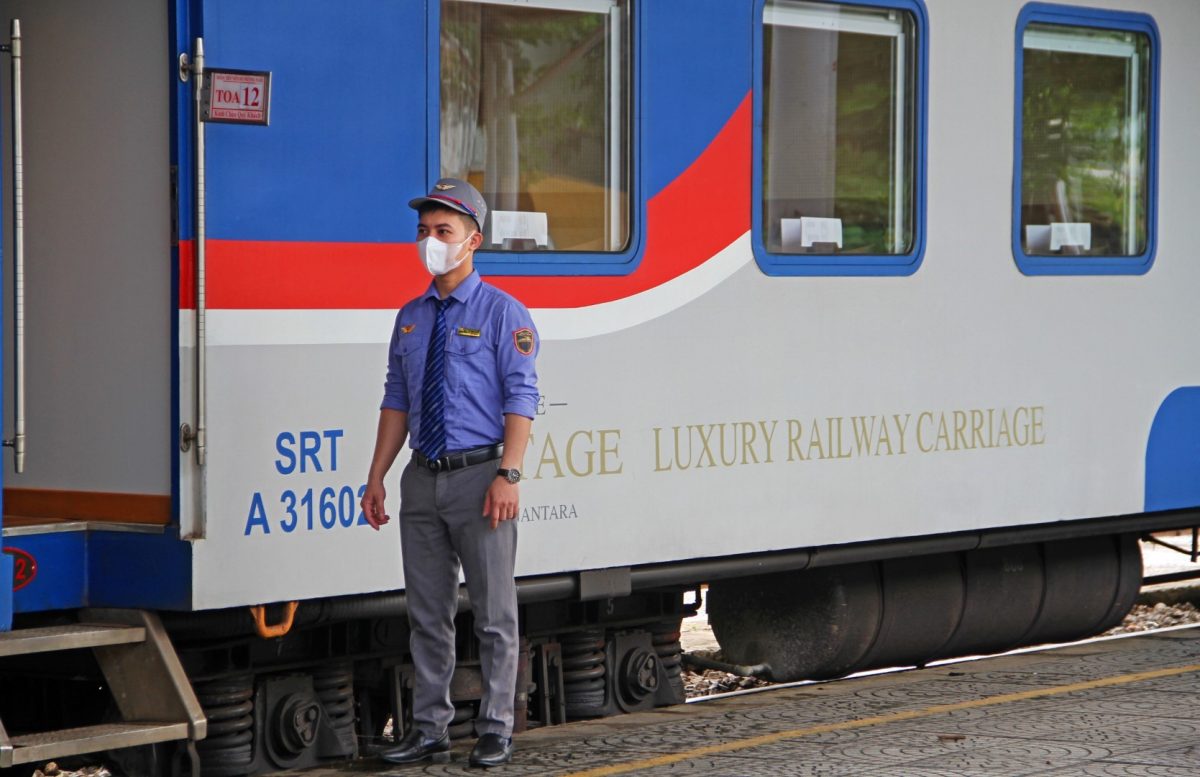
Reluctantly, I alighted at Dieu Tri at 2.54pm, but other passengers stayed in the luxury carriage for Nha Trang. Staff from the Anantara Quy Nhon Villas met me and transferred me to this idyllic beachside resort in a part of Vietnam that few visit. Located on a secluded bay, my beachfront villa had a private plunge pool and luxurious interiors. I enjoyed Vietnamese dishes at Sea.Fire.Salt and relaxed in the spa.
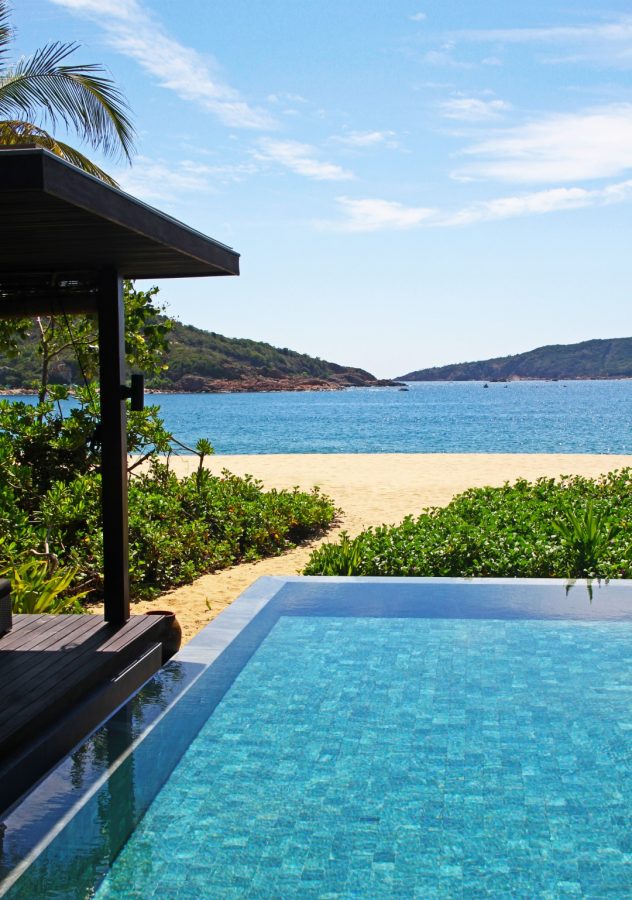
DIEU TRI TO NHA TRANG
After a few days of beachside relaxation, I rejoined the train at Dieu Tri for the late afternoon rail journey to Nha Trang, and despite the failing light, I admired the coastal views at dusk. Staff from the recently opened Gran Meliã Nha Trang met me at the bustling station and whisked me to the all-villa resort.
While Nha Trang’s towering city beach hotels offer comprehensive services and facilities, I chose Villa Le Corail, A Gran Meliá Hotel, for it being out of the city centre, and for its resort ambiance. Passengers who alight here can explore the fishing village along the Cai River and the archaeological remains of Po Nagar Cham Towers. The resort is an expansive property with its villas tucked in at the base of a rocky headland. A constructed shallow lagoon is a feature, but I spent my time relaxing in my private plunge pool. The breakfast and meals served here in the Spanish and Japanese restaurants were superb.
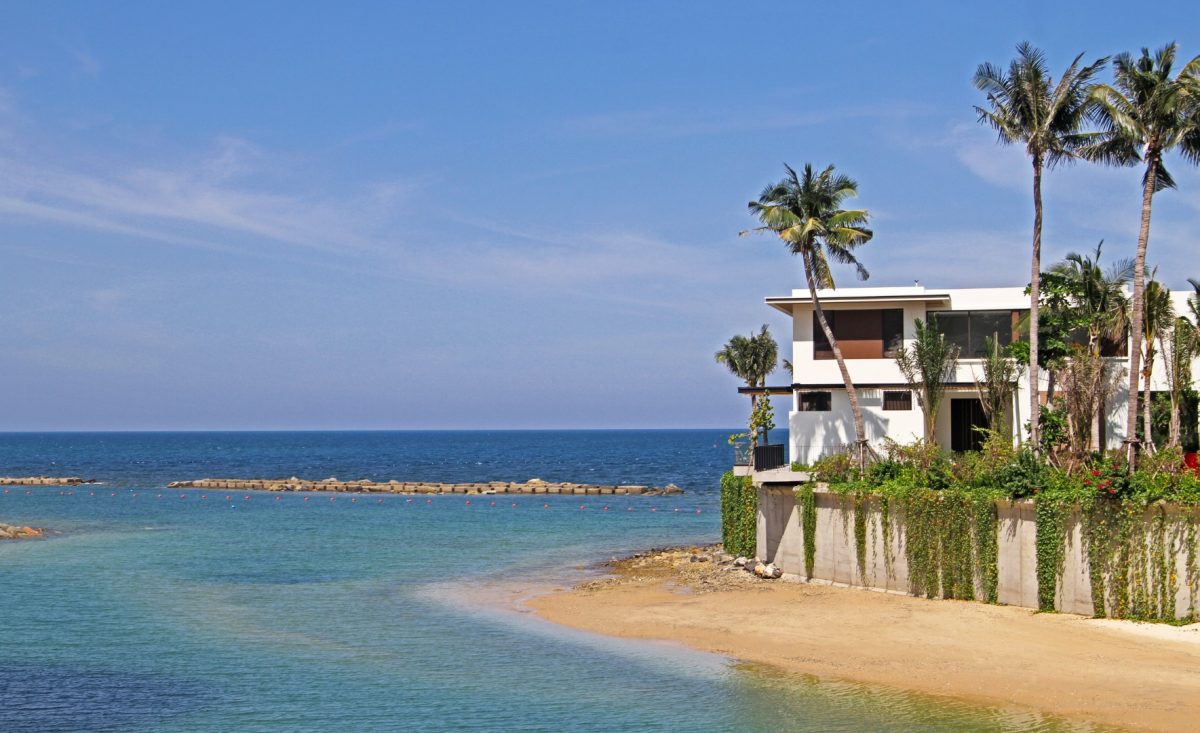
NHA TRANG TO BINH THUAN
A few days later, I rejoined the train southward in the mid-morning, passed the emerging seaside resort of Cam Ranh, and arrived in Binh Thuan, the station for the twin coastal resort destinations of Phan Thiet and Mui Ne. Phan Thiet is famous for fishing and fish sauce (nouc nam), an essential ingredient in Vietnamese cooking. There are several seaside resorts nearby at Phan Thiet and further north at the more popular Mui Ne.
I’d booked The Anam Mui Ne after reading about its beachfront, Indochine charm, and modern luxury. Staff greeted me at the train for the 30-minute transfer. Mui Ne has welcomed global travellers and its relaxed vibe was most refreshing. However, the Anam was a real surprise, and for a resort that has only been open under two years, it has the grace and elegance of a mini Raffles. The tiled floors and period furniture offer the graciousness of a bygone era. There are two pools and some suites have their own private plunge pool.
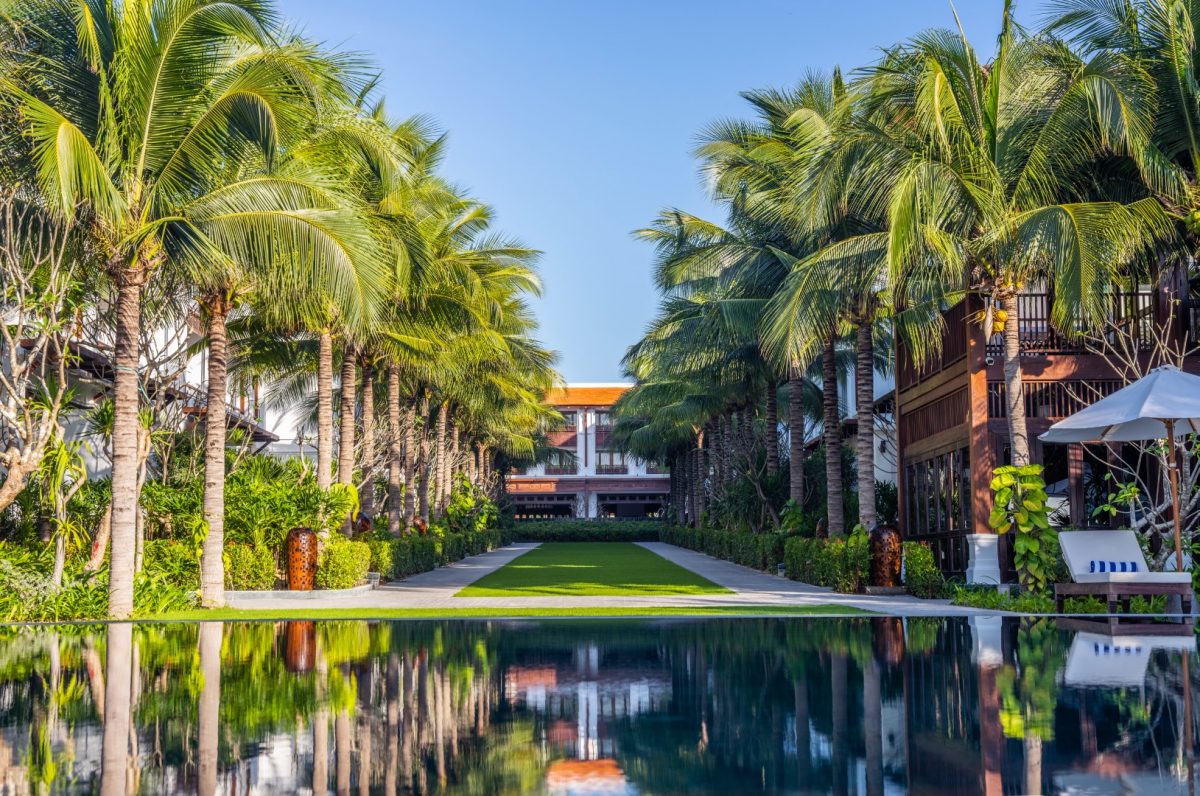
The food of regional Vietnamese dishes is superb, and a breakfast so extensive, it lasted me throughout the day. Saigon Bar is one of those venues at which you just want to pull up a rattan chair beneath a slowly rotating fan and start working your way through the cocktail list; I dutifully obliged.
BINH THUAN TO HCMC
The final run from Binh Thuan is just four hours with passengers arriving at Ga Sai Gon (for some, the former name is hard to let go). Vietnam’s largest metropolis, with nine million residents, has numerous attractions, including the War Remnants Museum, Binh Tay Market, Opera House, Central Post Office, the Gothic-style Notre-Dame Cathedral, and Bitexco Tower with a skydeck on the 49th floor of this 68-storey building.
HCMC Station (Ga Sai Gon) is located close to the city centre, and not far from my hotel of choice, the Novotel Saigon Centre. It was just a pleasant kilometre walk from the city’s main precinct, and its On Top rooftop bar was most appealing.
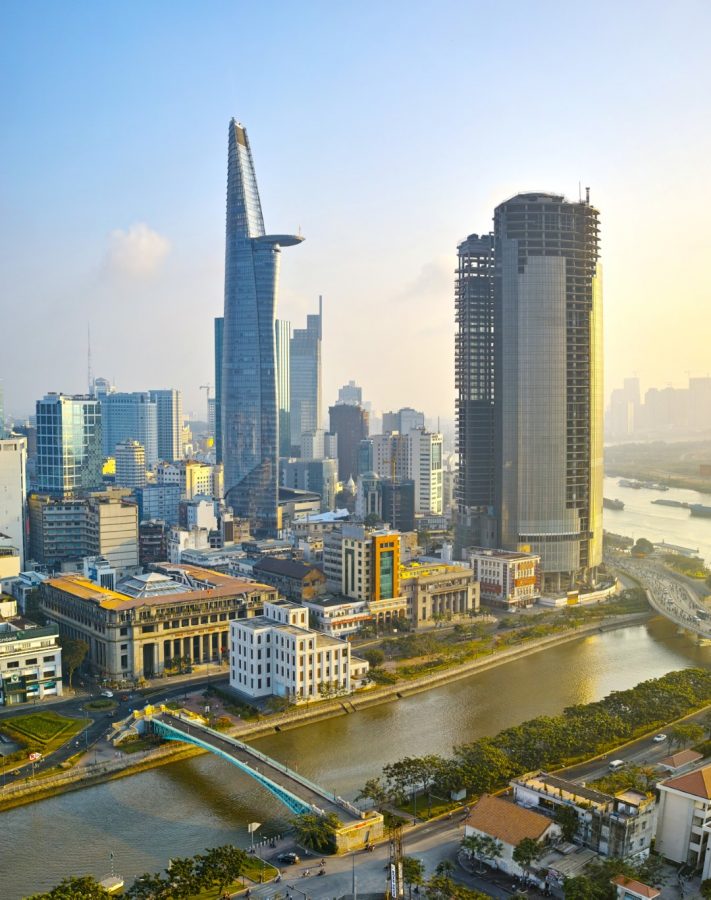
LOGISTICS
Vietnam’s railways are popular with locals and increasing numbers of travellers. Book seats/sleeping berths (mostly four to a cabin with lower bunks more accessible than upper ones), and enjoy the journey through rural and coastal Vietnam. All trains have dining cars, while snacks/beverages are sold from carts wheeled through the train.
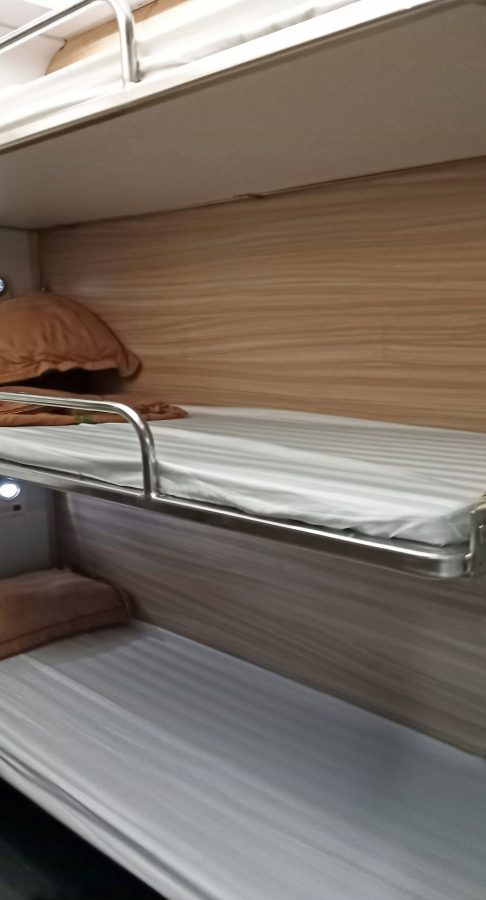
Long-distance trains are air-conditioned, with seating offered as soft seats, four-berth first class, and six-berth second class. Trains SE1 and SE2 have a few VIP sleeper cabins that accommodate two passengers (both lower berths).
AirAsia (airasia.com) flies to Hanoi, HCMC, Cam Ranh (for Nha Trang), and Danang, so there are various arrival and departure options. I travelled on the following trains: SE5 (ex-Hanoi at 1530, arrive in Danang at 0830 on day two), SE21 (depart Danang at 0815 on The Vietage Anantara Luxury Rail Carriage, arrive in Dieu Tri at 1454), SE21 (ex-Dieu Tri at 1454, arrive in Nha Trang at 1918), SE5 (ex-Nha Trang at 0945, arrive in Binh Thuan at 1401), and SE7 (ex-Binh Thuan at 1401, arrive at HCMC at 1810).
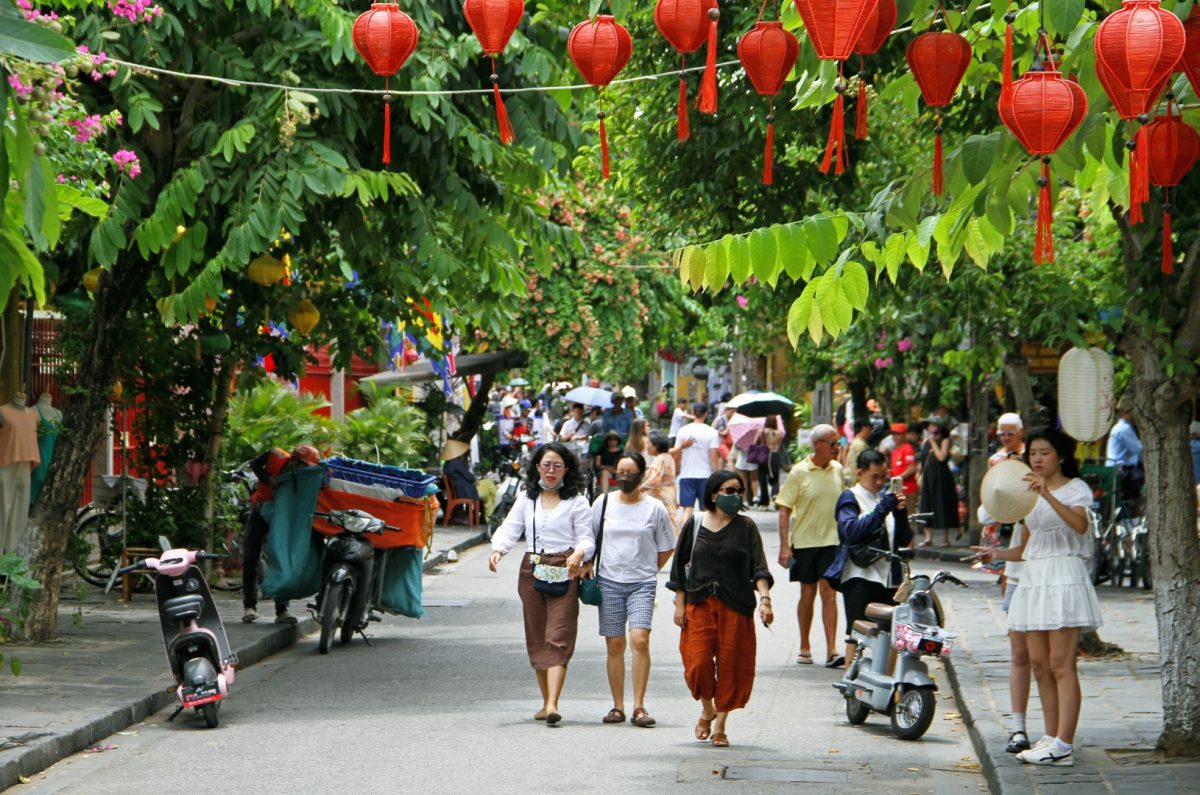
The best website to consult is The Man in Seat61 (seat61.com), and seats are best booked via BaoLau (baolau.com), a seamless booking service with a small service fee.
Many visitors to Vietnam require a visa, and this is best done weeks ahead if possible, as exorbitant fees apply for last-minute visas.
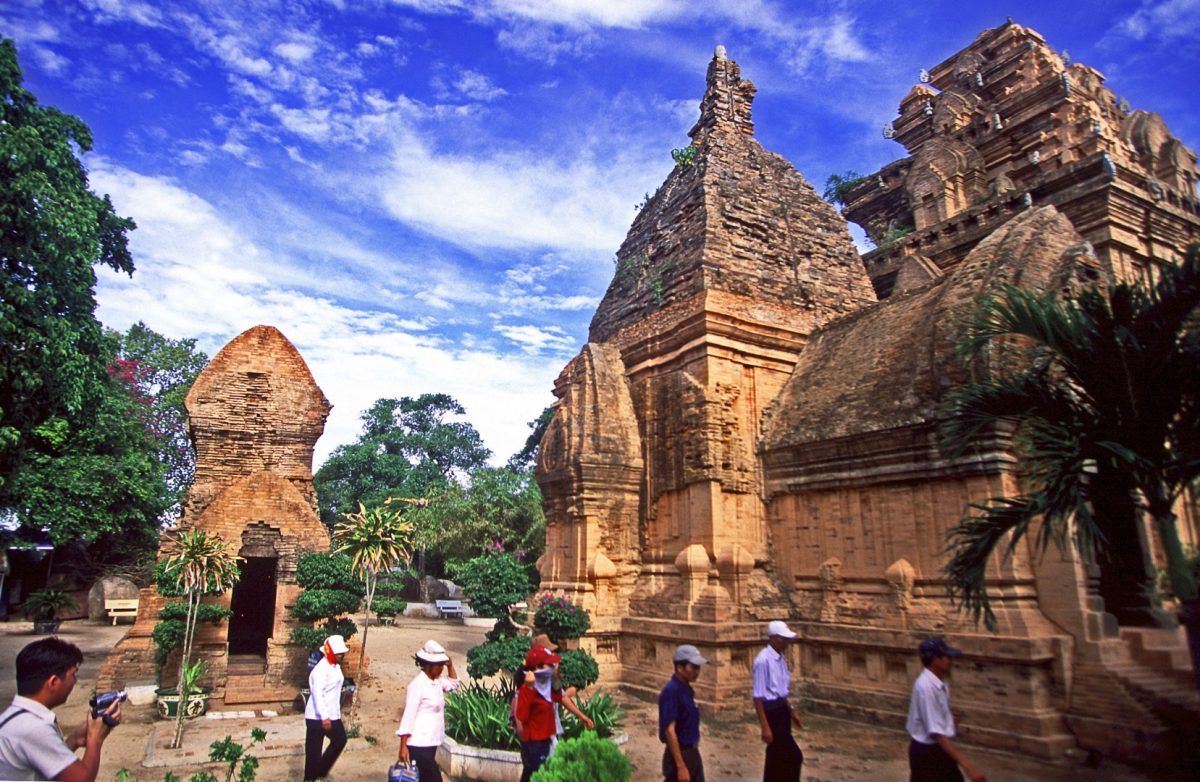
"ExpatGo welcomes and encourages comments, input, and divergent opinions. However, we kindly request that you use suitable language in your comments, and refrain from any sort of personal attack, hate speech, or disparaging rhetoric. Comments not in line with this are subject to removal from the site. "





















